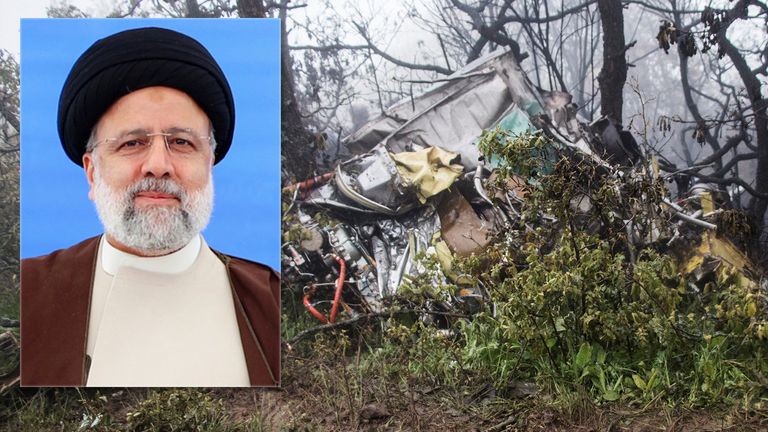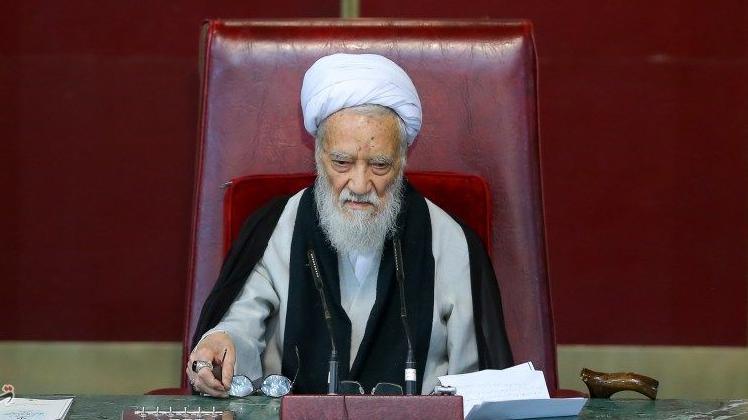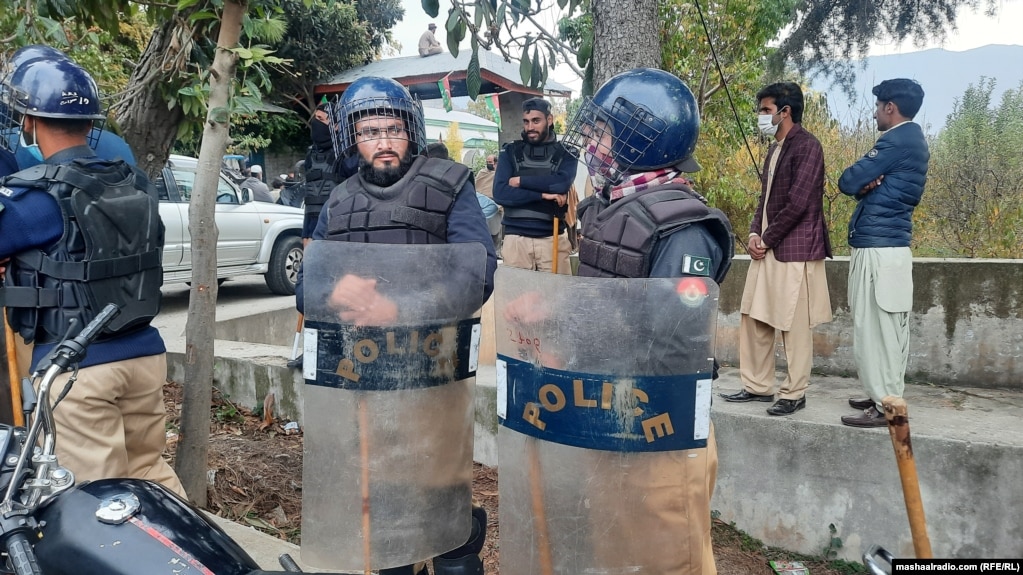
The Transitional Period — a Not-so-easy Test
In an editorial published by Mohammad-Sadegh Janan-Saffat in Jahan-e Sanat newspaper, the focus is on the transitional phase in Iran following the demise of President Ebrahim Raisi and his accompanying delegation. The editorial highlights that the period from now until the presidential election, spanning 50 days, can be deemed a transitional phase.
Administratively, this period may seem manageable as the Iranian Constitution outlines responsibilities for managing the country until election day. A council comprising the first vice president and heads of the legislative and judicial branches is tasked with election preparations. However, potential difficulties may arise if there is discord among political factions, as seen in the recent Consultative Assembly elections.
The editorial points out the challenges of maintaining stability during this transition phase, drawing parallels with past elections where factional differences hindered the process. Moreover, decreased voter turnout in previous parliamentary elections underscores the need for effective management of the transition process.
Beyond electoral concerns, governing the nation in the absence of key figures presents its own challenges, especially in domestic and foreign policy matters. The editorial stresses the importance of continuing dialogue with the West, particularly the United States, without deviation. Additionally, addressing public inquiries regarding technical details of significant events, such as helicopter crashes, adds to the complexity of governance.
The editorial emphasizes that while mourning the loss of the 13th government’s leader is natural, it should not alter the government’s strategies or grant undue advantage to any particular faction. Managing this transition period effectively requires a balanced approach in both domestic and foreign policy, while ensuring transparency and accountability to the public.
The editorial elucidates that the current transitional phase in Iran may seem straightforward due to constitutional provisions outlining administrative responsibilities until election day. A three-member council comprising the first vice president and heads of the legislative and judicial branches is tasked with election preparations. However, potential challenges loom if political factions lack cohesion, as evidenced by the recent Consultative Assembly elections where fundamentalist factions exhibited discord over power dynamics.
Conversely, the editorial highlights a concerning trend of voter apathy in parliamentary elections, attributing it to a lack of enthusiasm and rival political factions. Managing this transition amidst such complexities poses a formidable test for those responsible for facilitating the upcoming elections and overseeing the process.
Beyond electoral concerns, governing the nation amidst the absence of key figures presents additional hurdles, particularly in domestic and foreign policy arenas. Upholding continuity in dialogue with the West, notably the United States, remains paramount, notwithstanding the need to address public inquiries regarding crises such as helicopter crashes.
Moreover, the editorial underscores the importance of maintaining societal cohesion and transparency in the face of adversity. While mourning the loss of the 13th government’s leader is natural, it should not be exploited to alter established governmental strategies or grant undue advantage to any particular faction.
Ultimately, the editorial serves as a stark reminder that Iran stands at a critical juncture, where the choices made today will reverberate far into the future. As the nation navigates this transitional period, it must do so with unwavering commitment to democratic principles, stability, and the welfare of its citizens.
An Unfortunate Incident
Ali Begdeli, a prominent journalist and university professor, shares insights in an editorial featured in Setar-e Sobh newspaper’s online edition, delving into the speculation surrounding the helicopter crash involving the president and his entourage.
Reports and rumors of the incident began circulating across news outlets at 16:30 p.m., sparking a flurry of contradictory information. As the publication prepares to go to print, no official confirmation has been received, leaving the situation shrouded in uncertainty. Begdeli urges caution, emphasizing that any commentary at this juncture is speculative and lacks definitive verification.
One key point of contention the writer raises is the composition of the officials aboard the helicopter. Questioning the necessity of Foreign Minister Hossein Amir-Abdollahian’s presence, especially considering the absence of political negotiations at the border point they were heading to, Begdeli suggests that the diplomatic significance of the trip did not warrant his attendance. The purpose of President Raisi’s visit to East Azerbaijan was the inauguration of the Qiz Qala Si border dam, an event seemingly unrelated to diplomatic affairs.
Begdeli underscores the expectation that helicopters transporting officials of such stature should adhere to the highest safety standards, given the importance of their passengers. The tragic crash prompts reflection on the adequacy of safety protocols and the need for the most advanced aircraft for such high-profile journeys.
The next crucial aspect of the incident under scrutiny is the speculation surrounding adverse weather conditions. Begdeli highlights the standard protocol for trip planning, emphasizing the importance of obtaining necessary weather forecasts and assessing conditions along the president’s helicopter route prior to departure. Reports suggest that the crash occurred in one of the region’s most treacherous areas, characterized by challenging terrain exacerbated by cold, foggy, and rainy weather conditions. These adverse conditions hindered rescue efforts, contributing to the lingering ambiguity surrounding the incident.
The editorial argues that while the manner of news dissemination has drawn criticism, Begdeli notes that such reporting tactics are not without precedent. In some cases, delaying the release of information serves to temper initial reactions and prepare the public for distressing news. Presently, the fragmented nature of reports resembles pieces of a puzzle, hinting at a grim outcome. The delay in information dissemination, while perceived as unusual, is deemed acceptable by the writer, given the sensitivity and complexity of the situation.
As the hours passed, indicators such as radio and television broadcasts urging prayers signified that a somber event was about to unfold. Moreover, reports of the Supreme National Security Council’s convening, attended by high-ranking officials including the leadership, added weight to the gravity of the situation. With political leaders from other nations reacting to the incident, the writer urges the public to remain vigilant and await further developments.
The Politics of Mirage
In an editorial featured on Hammihan Online, the intricate interplay between human perception and political reality is likened to the phenomenon of mirages. The author delves into the captivating imagery of mirages, where sunlight reflecting off arid desert landscapes can conjure illusions of water and surreal spectacles, ultimately leading the weary traveler astray.
Seasoned observers recognize mirages for what they are — tricks of the light, mere optical illusions born from specific atmospheric conditions. Yet, to the inexperienced or desperate, the allure of these illusions can be irresistible, leading them to expend precious energy in pursuit of an unattainable oasis.
Drawing a parallel to the political landscape, the editorial suggests that when the terrain of politics resembles a barren desert, devoid of vitality and dynamism, it becomes fertile ground for mirages of political grandeur. Activists, yearning for change, may mistake these illusions for reality, believing that they hold the key to everlasting satisfaction.
The editorial casts a critical eye on the recent experience of Iran’s “hardliner” movement following the 1400 HS elections. Initially seduced by the mirage of political uniformity, some members have now awakened to the harsh reality. The promise of unity proved elusive, yielding instead to a landscape marred by discord, corruption, and inefficiency.
The “hardliners,” driven by their rejection of others rather than a cohesive vision, find themselves disillusioned by the mirage they once pursued with fervor. As they reflect on their journey, they realize that true progress demands more than mere opposition — it requires constructive ideas and genuine engagement with societal needs.
The article also highlights the imperative of understanding and unity for the collective good within the political landscape. With uncertainties looming over the fate of the next Parliament, questions arise regarding the mindset and capabilities of its members. Will they approach the country’s challenges with a shared understanding and constructive solutions, or will they persist in behavior dictated by factional allegiances?
In a well-functioning political society, clarity reigns post-election, with defined representation, programmatic agendas, and anticipated leadership roles. However, the current political climate offers no such certainties. The author laments the absence of transparency and predictability, exacerbated by the pervasive influence of mirages — illusions that distort perceptions and impede constructive dialogue.
Even the seemingly straightforward task of passing legislation is mired in discord, exemplified by the recent controversy over Saturday holidays. Internal divisions within factions hinder productive discourse, undermining the potential for unity on fundamental issues.
Looking ahead, the author expresses hope for a recalibration of official policies within the new Parliament. Learning from past and present challenges, there is an opportunity for meaningful revision and a renewed commitment to effective governance. Only through collective introspection and a willingness to transcend factional divides can parliamentarians hope to navigate the complex terrain of Iranian politics with clarity and purpose.
Why Was Our Reporting of the Incident Not Up to the Mark?
Farhad Khademi, in an editorial featured in Siasat Rooz newspaper, critiques the flawed reporting surrounding the tragic helicopter crash that claimed the lives of President Raisi and his entourage. The incident, which dominated global headlines, placed Iran under intense scrutiny and drew attention to the city of Tabriz.
He points out that despite the gravity and sensitivity of the event, the public was left in a state of confusion and misinformation, exacerbating societal tensions. Khademi attributes this disarray to a lack of foresight and adherence to proper reporting protocols, resulting in a haphazard dissemination of information that only served to inflame public sentiment.
Khademi adds that in the absence of a centralized authority or designated spokesperson to provide accurate updates, various news outlets relied on speculation rather than verified facts. He highlights a series of erroneous reports issued in the immediate aftermath of the crash, underscoring the detrimental impact of such misinformation on public perception.
From conflicting accounts of the president’s condition to unsubstantiated claims of communication with passengers, the dissemination of false information further compounded the confusion and anxiety gripping society. Khademi poses a critical question: how long must such lapses in reporting standards persist before concerted efforts are made to establish reliable and transparent narratives?

Iranian President, Accompanying Delegation Die in Helicopter Crash

Iranian President Ebrahim Raisi and his eight-person delegation, including Foreign Minister Hossein Amir-Abdollahian, were killed in a helicopter crash, according to official reports released on Monday, Ordibehesht 31. The tragic incident led to an extensive search and rescue operation that lasted 18 hours, ultimately confirming the deaths of Raisi and his accompanying officials after the wreckage was found.
Following the confirmation of these deaths, the Iranian government issued a heartfelt statement. They honored Raisi as a hard-working and tireless leader dedicated to serving the Iranian people. The statement praised his commitment to the nation’s advancement and progress, emphasizing that he remained true to his promise of service, ultimately sacrificing his life for the betterment of the country.
However, the news of Raisi’s death was met with mixed reactions. On social media platforms, many users who oppose the Islamic Republic expressed their satisfaction over the president’s demise. They criticized Raisi, calling him a “murderer” and holding him accountable for numerous deaths in the 1980s. This sentiment highlighted the deep divisions within Iranian society and the controversial legacy of Raisi’s political career.
Radio Farda Persian
Leader of the Revolution Appoints Mokhber as Acting President

The supreme leader has appointed Mohammad Mokhber as the head of the government administration, tasked with overseeing the organization of the upcoming presidential election within the next 50 days. Ayatollah Khamenei, in a message released commemorating the martyrdom of Ayatollah Raisi, announced this decision.
In his message, Khamenei cited Article 131 of the Iranian Constitution, stating that Mokhber is now responsible for managing the executive branch. He emphasized Mokhber’s obligation to collaborate with the heads of the legislative and judicial branches to ensure the smooth conduct of the presidential election within the stipulated timeframe.
Yet, following the tragic death of Iranian Foreign Minister Hossein Amir-Abdollahian, Ali Bagheri, the deputy at the Ministry of Foreign Affairs, has been appointed as his successor.
This decision was made with the approval of the government board. Bagheri now assumes the role of leading the Ministry of Foreign Affairs during this challenging time, tasked with navigating Iran’s diplomatic responsibilities and relationships on the global stage.
In addition, a period of five days of public mourning has been declared, as announced in the condolence message from Ayatollah Khamenei.
In his message, Ayatollah Khamenei expressed his condolences to the people of Iran and decreed the observance of five days of public mourning in honor of President Raisi. The President met his untimely end while on duty, attending the inauguration of the Qiz Qalasi border dam in East Azerbaijan Province.
The accident occurred when the helicopter carrying President Raisi and his entourage encountered a tragic incident. Among the passengers were Tabriz Friday prayer leader Ayatollah al-Hashem, Foreign Minister Hossein Amir-Abdollahian, East Azerbaijan Governor Malik Rahmati, and several others. The nation mourns the loss of these esteemed individuals who were dedicated to serving Iran.
Mohammad-Ali Movahedi Kermani Becomes Assembly of Experts Chairman

The inauguration of Iran’s sixth Assembly of Experts, tasked with the authority to appoint and dismiss the country’s leader, has taken place. “Conservative” politician Mohammad-Ali Movahedi Kermani assumed the role of chairman with a significant majority, garnering 55 out of 83 votes.
Prior to selecting council members, Movahedi Kermani was elected as the Sunni representative. The session commenced with the reading of a message from Iran’s Supreme Leader Ali Khamenei, emphasizing the assembly’s role in upholding Islamic democracy.
The event saw the presence of key Iranian officials, including heads of the judiciary and Parliament, senior IRGC commanders, and former President Mahmoud Ahmadinejad.
Kermani, aged 93, brings extensive political experience to his new role, having been a longstanding member of Iran’s Labor Party since the inception of the Assembly of Experts. He previously served as Khamenei’s representative in the IRGC and briefly assumed the position of Parliament speaker.
In the election for the assembly’s board, “conservative” figures Hashem Hosseini-Busheri and Alireza Arafi were chosen as the first and second vice presidents, respectively. Hosseini-Busheri leads the Society of Seminary Teachers of Qom, known for its conservative stance, while Arafi is a member of the Guardian Council.
The Assembly of Experts operates on an eight-year term, with board members elected for a two-year tenure.
The Iranian Constitution stipulates that “whenever the leader becomes unable to perform his legal duties” or “it turns out that he lacked some conditions from the beginning, he will be removed from his position,” with the Assembly of Experts responsible for making this determination.
Critics argue that during Khamenei’s 35-year tenure as supreme leader, the Assembly of Experts has failed to adequately fulfill its duty of overseeing his performance. These critics contend that the assembly has not effectively exercised its constitutional mandate to monitor and, if necessary, hold the leader accountable for any shortcomings or failures in meeting the prescribed conditions of his role.
Two Iran-affiliated Militants Arrested in Karachi

The Sindh Police Counter-Terrorism Department (CTD) in Karachi, Pakistan, reported the arrest of two armed individuals associated with the Zainabiyoun militant group. Asif Ejaz Sheikh, head of the Sindh Police branch, disclosed this development during a press briefing in Karachi on Thursday, May 27. Sheikh asserted that both suspects had received training in Iran and were allegedly directed by Iranian intelligence agencies to target religious scholars and members of a rival religious faction in Karachi.
Identified as Waqar Abbas and Hussain Akbar, the accused hail from the Gilgit region of Pakistan. They are alleged to have been involved in the fatal shooting of 17 religious scholars in Karachi between September of last year and February 21 of this year, along with injuring 11 others.
During the press conference, Karachi CTD Police Chief Raja Umar Khattab described the group’s leader in Karachi as Syed Hussain Mousavi, known as “Muslim,” characterizing the group’s operations as resembling those of a civilian intelligence organization.
Authorities have reportedly identified 23 members of the Iran-backed Zainabiyoun militant group in Karachi and are actively pursuing them. Both the Zainabiyoun Brigade, composed of Pakistani Shiites, and the Lashkar Fatemiyoun Army, made up of Afghan Shiites, were established by Iran for engagement in regional conflicts, particularly in Syria. These groups have been subject to US government sanctions since 2019 for their involvement in terrorist activities.
